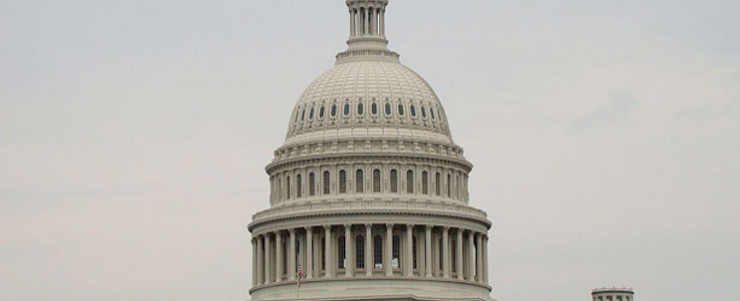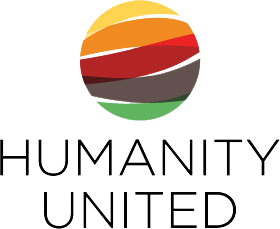Promote Fair Hiring:
Adopt and enforce policies to protect migrant workers from human trafficking and slavery.
In this Fair Hiring Toolkit, government and public policy actors will find material that encourages companies to work with other stakeholders to effectively address forced labor and the risks of human trafficking faced by migrant workers.
The Toolkit promotes multi-stakeholder engagement and public policy advocacy, working through representative trade associations and employers’ organizations at national and international levels. It also advocates for greater transparency in social reporting on supply chain performance and encourages companies to adopt and implement comprehensive supply chain policies based on principles set out in relevant ILO and UN Conventions.
The Toolkit provides business with practical guidance that can lead to improvements in fair hiring and protections for migrant workers, complementing public policy efforts to do the same.
KEY QUESTIONS FOR GOVERNMENTS
Verité also offers the following questions that governments can consider in evaluating their own approach to issues of forced labor and human trafficking in global supply chains.
- Does your country have policies or regulations governing the hiring and recruitment of migrant workers that are consistent with the standards set out in ILO Conventions 97, 143, 181 and Recommendation 188?
- Do you regulate the activities of labor recruiters and have formal mechanisms by which they are accredited and monitored?
- Does your country have mechanisms in place to coordinate with other countries in the regulation of labor recruiters? Do you collaborate with other governments on the tracking, identification and prosecution of abusive recruitment and hiring practices such as excessive recruitment fees, contract substitution and fraudulent use of work visas and permits?
- If your country has a formal guest worker program, does it include mechanisms to monitor the working conditions of guest workers? Have you established formal channels through which guest workers are able to lodge grievances and seek resolution to – and formal protection against retribution for – work conflicts? Do you have a mechanism by which guest workers can hold their recruiters or employers responsible for fraudulent recruitment practices?
Below is a list of tools within the Fair Hiring Toolkit that we gathered for their relevance to Governments and Public Policy Actors.
BRANDS AND SUPPLIERS – IMPROVING CODES OF CONDUCT AND COMPANY POLICIES
High level corporate policies or code-of-conduct language on forced labor, human trafficking and the vulnerabilities of migrant workers is a critical first step for any company in addressing these risks in global supply chains. However, most codes of conduct – including those developed by multi-stakeholder initiatives – do not address these risks in detail. To address this weakness, the Fair Hiring Toolkit provides guidance material for both brands and suppliers on improving codes of conduct and strengthening supply chain policies to bring them in line with internationally agreed instruments.
SAMPLE CODE OF CONDUCT PROVISIONS
This tool – featured in both the Brand and Supplier sections – provides sample code-of-conduct language to develop, revise and strengthen corporate and supply chain policies prohibiting forced labor and human trafficking. It is based on instruments adopted by the ILO and UN, and complements strong public policy efforts aimed at promoting good practice by recruiters, preventing the risks of forced labor and human trafficking in global supply chains, and establishing mechanisms to protect migrant workers. The tool recommends the adoption of clear, comprehensive and strong provisions on issues such as recruitment fees, freedom of movement, and passport retention, all of which – in many parts of the world – are closely linked to key public policy concerns. See Toolkit for Brands>Step 1: Tool 1
BRANDS – RAISING AWARENESS AND BUILDING CAPACITY
Policies and supply chain codes cannot be effectively implemented unless the issues they address are fully understood by management and staff. A company that is well-trained and informed will be in a strong position to successfully translate new policies into effective and sustainable practice.
Training and awareness raising are among the key strategies used by companies to implement their codes of conduct. The Fair Hiring Toolkit supports these efforts by providing tools that help brands and suppliers better understand the risks they face and the vulnerabilities of migrant workers. Governments can use these tools in their own outreach to the private sector.
WHAT SHOULD YOU LOOK FOR? IDENTIFYING BRAND RISK AND VULNERABILITY TO HUMAN TRAFFICKING AND FORCED LABOR OF MIGRANT WORKERS
This tool – offered in both the Brand and Supplier sections – provides a complete set of indicators or “red flags” of recruiter-induced forced labor. It translates Verité’s global research on human trafficking into a clearly defined set of problems that brands should be aware of and social auditors, civil society groups and other stakeholders should be on the look out for. These are common forms of abuse that face migrant workers in the global economy and may indicate or enable conditions of forced labor. Some of them are the direct result of malpractice on the part of recruiters and employers; while others may be rooted in restrictive policy environments, bad legislation or lack of regulatory oversight and enforcement of recruiters and labor migration. Governments should ensure that their policies and regulatory regimes do not exacerbate or create vulnerabilities for migrant workers. See Toolkit for Brands>Step 2: Tool 1
BRANDS – REPORTING AND TRANSPARENCY
Brands are facing growing expectations from key stakeholders such as governments, investors and consumers to disclose information about their supply chain engagement. In some cases, this pressure is the result of new regulatory requirements, for example in the US State of California (the California Transparency in Supply Chains Act), that oblige brands to describe and demonstrate their efforts to eradicate slavery and human trafficking in their supply chains.
To support improvements to corporate reporting, the Fair Hiring Toolkit provides a guide to integrating indicators of forced labor and human trafficking into reporting mechanisms. This tool complements broader public policy efforts in many parts of the world to encourage more and better reporting on corporate policy, performance and impact on human and labor rights in global supply chains.
REPORTING & TRANSPARENCY: INTEGRATING INDICATORS OF FORCED LABOR AND HUMAN TRAFFICKING
To meet the growing expectations of transparency from governments and other stakeholders, brands need to improve their reporting on core issues like forced labor. To help them with this task, this tool provides examples of good practice in disclosure and guidance on improving the quality of reported information. It also introduces the recent California Transparency in Supply Chains Act, which requires retailers and manufacturers doing business in the state with annual revenues of over $100 million to disclose information about their efforts to eradicate slavery and human trafficking from their supply chain. See Toolkit for Brands>Step 5: Tool 1
Corporate reporting on forced labor and human trafficking is often characterized as superficial. Many reports are qualitative and provide only a snapshot of particular incidents or actions taken, while others are similarly partial and focus only on policy to the neglect of implementation, programs and performance. To strengthen these reports, this tool also provides companies with a series of recommendations, covering what and how to report on forced labor and suggestions on the means and topics of communication, including policy development, awareness raising and training, auditing procedures, corrective and preventive action, and multi-stakeholder engagement.
BRANDS – PUBLIC POLICY ADVOCACY
Existing gaps in national legislation and global standards, and under-developed public infrastructure and multi-lateral cooperation, make it a challenge for businesses to address forced labor effectively, promote fair hiring in the global economy, and establish protective measures for migrant workers in their sphere of influence. To address these challenges, many brands are engaging in public policy advocacy at national and international levels.
The Fair Hiring Toolkit supports these efforts by providing two tools to help companies engage governments effectively. These tools are further supported by Verité’s Policy Brief on Labor Brokers and Human Rights.
A GUIDE TO PUBLIC POLICY ADVOCACY
Public policy advocacy by brands has emerged as a key form of engagement in CSR in recent years. It targets governments at national levels in sending and receiving countries, and international organizations like the ILO and UN. Such advocacy has many forms and sources. This tool discusses each, and provides a practical overview of what brands can do. It encourages them to engage governments and policy actors to address issues of common concern, including regulatory oversight of recruiters, protection of migrant workers and challenges in policy environments that allow excessive recruitment fees to be charged to workers, passport retention and limitations on migrant worker freedom of movement. The tool illustrates its recommendations with recent examples of policy engagement by leading brands. See Toolkit for Brands>Step 7: Tool 1
MAKING THE CASE FOR JOINT ACTION IN PUBLIC POLICY ADVOCACY
Companies can advocate effectively for public policy dialogue and reform through national or industry-based associations that represent their interests. These organizations can seek better regulation of the recruitment industry and effective protections for migrant workers, lobbying UN agencies and government departments directly. But what does this mean in practice? This tool presents an overview of how brands engage effectively through representative organizations and outlines a series of practical steps to action. It encourages public-private and multi-stakeholder engagement to tackle the most challenging issues facing the global economy. See Toolkit for Brands>Step 7: Tool 2

For Brands
Framework for Action: What Can Brands Do? >>
1. Improving Codes of Conduct and Company Policies >>
2. Raising Awareness and Building Capacity >>
3. Strengthening Assessments & Social Audits >>
4. Taking Corrective Action & Developing Systems Improvement Plans >>
5. Reporting & Transparency >>
6. Multi-Stakeholder & Multi-Brand Engagement >>
7. Public Policy Advocacy >>
For Suppliers
Framework for Action: What Can Suppliers Do? >>
1. Improving Codes of Conduct & Company Policies >>
2. Raising Awareness & Building Capacity >>
3. Screening & Evaluating Labor Recruiters >>
4. Managing Labor Recruiters & Monitoring for Ethical Recruitment & Hiring >>
5. Ensuring Good Practice in Human Resources Management >>
6. Establishing Effective Grievance Mechanisms & Protection for Whistleblowers >>
7. Taking Corrective Action & Developing Systems Improvement >>
